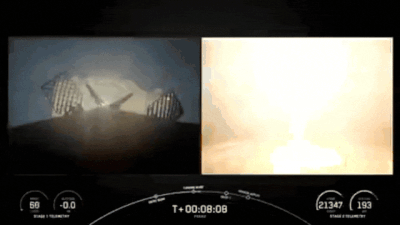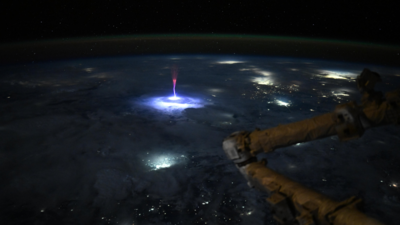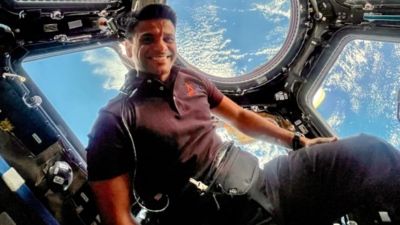Watch: SpaceX launches first human spaceflight over Earth’s polar regions

SpaceX launched the “Fram2 mission” on Tuesday (local time), marking the first human spaceflight over Earth’s polar regions.
The privately funded mission will carry four astronauts on a days-long orbital journey. Fram2 is named after the famous 19th-century Norwegian ship used for Arctic and Antarctic expeditions.
The mission launched from SpaceX’s facilities aboard a Falcon 9 rocket at 9:46 pm ET Monday (0146 GMT Tuesday, 07:16 am IST) from Nasa’s Kennedy Space Center in Florida. The mission aims to advance research supporting future long-duration space travel to Mars.
‘Powerful rocket roared upward’
Cheers filled the control room as the rocket soared into the night, leaving a bright orange trail as it headed toward Earth’s poles. Minutes later, the Falcon 9’s first-stage booster separated and safely landed on a marine vessel.
Minutes after liftoff, the Falcon 9’s first-stage booster separated from the upper stage and returned to land on a floating barge.
The rocket’s upper section activated its engine and accelerated the crew to orbital velocities exceeding 17,500 miles per hour (28,000 kilometers per hour), establishing a trajectory directly over Earth’s poles, CNN reported.
Who are the 4 private astronauts?
The crew comprises Chun Wang, a Chinese-born Maltese entrepreneur and crypto company co-founder who organised the Fram2 mission; commander Jannicke Mikkelsen, a Norwegian filmmaker; pilot Rabea Rogge, a German robotics researcher; and Eric Philips, an Australian polar explorer serving as mission specialist and medical officer.
Chun Wang, a bitcoin investor who bought a SpaceX flight for himself and three polar explorers launched Monday night on the first-ever crewed mission over both the North and South Poles.
Wang, a Chinese-born entrepreneur, lifted off from aboard SpaceX’s Falcon rocket, which took a southward path over the Atlantic—marking a historic first in 64 years of human spaceflight.
Having previously visited the polar regions personally, he aims to observe them from space while “pushing boundaries, sharing knowledge,” he added ahead of the flight.
Mikkelsen, Norway’s first space traveller, previously flew over the poles at lower altitudes during a 2019 Gulfstream jet mission commemorating the Apollo 11 moon landing anniversary.
Rabea Rogge, pursuing her doctorate in automated vehicle navigation in harsh conditions at the Norwegian University of Science and Technology, becomes Germany’s first female orbital astronaut.
Eric Philips brings extensive polar expertise, having conducted approximately 30 expeditions to Earth’s polar regions since 1992, according to his website and recent statements.
What will the team of 4 do?
The four-member team underwent rigorous eight-month training, including an Alaskan wilderness expedition that simulated confined living in extreme conditions.
Post-landing, the crew will test their ability to independently exit the spacecraft without medical assistance, contributing to research on astronauts’ post-spaceflight capabilities.
The astronauts will conduct studies on their physiological responses to zero gravity and space motion sickness, which frequently affects space travellers.
The mission encompasses various scientific endeavours, including pioneering space X-ray imaging and conducting microgravity mushroom cultivation experiments.
The crew has scheduled 24 experiments and equipped themselves with additional cameras to record their Fram2 journey, named after the historic Norwegian polar research vessel.
“We have an untraditional mission,” Mikkelsen said Friday. “We’re not your typical NASA astronauts. …We’ve gone from nothing to being certified astronauts to fly,” Mikkelsen added.
Why is it the first of its kind?
This mission breaks new ground as previous space missions never exceeded 65 degrees north and south latitude, remaining outside the Arctic and Antarctic circles.
Polar orbits provide optimal conditions for Earth observation, climate monitoring and surveillance satellites, enabling complete global coverage as Earth rotates beneath the spacecraft.
In 2023, Wang presented the polar flight concept to SpaceX, following US entrepreneur Jared Isaacman’s two chartered flights with the company. Isaacman is currently considered for NASA’s leadership position.
“Spaceflight is becoming increasingly routine and, honestly, I’m happy to see that,” Wang said on X last week.






